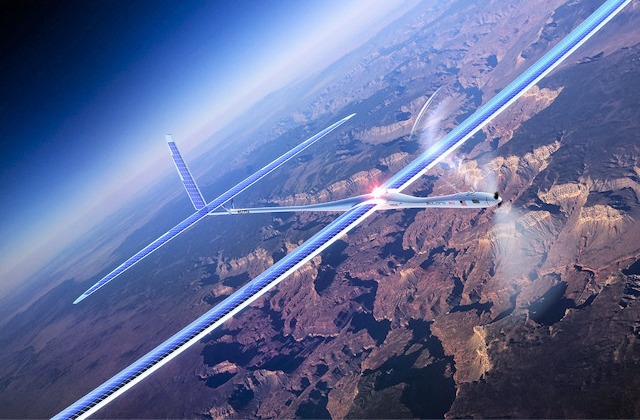On top of its efforts to beam Internet from the skies using high altitude balloons, Google is also busy in its plan to deliver connectivity from up above using unmanned aerial systems, or drones.
The Mountain View based company has begun to test a fleet of drones in New Mexico in order to identify the best way possible to transmit high-speed Internet from the sky.
Dubbed Project SkyBender, the project involves a number of transceiver prototypes and drones that are now flying over the spaceport in New Mexico.
The necessary facilities and equipment have been put in place now such as a flight control center and a terminal in support of the project that will explore the use of millimeter-wave radio to pave the way for the 5G wireless network, which will be multiple times faster than the existing 4G LTE infrastructure because it can potentially transmit gigabits of data per second.
In the long term, Google plans to deploy thousands of autonomous aerial vehicles to beam Internet to the world from the air. If the project succeeds, it will address current gaps in cellphone spectrum that has grown saturated with consumers. The millimeter wave is at the heart of this objective.
But the project is not without its share of challenges. For example, the millimeter wave spectrum will be limited in range compared to the transmission strength of cellphone signals. That means a millimeter wave cannot be functional from a high-flying drone. In order to address this technical barrier, Google must to focus the transmissions from what experts call a phased array, which would then be inefficient as it promises to use up much power and presents a lot of complications.
The drones that will power the SkyBender system will be powered using solar energy. Over the last several months, Google made a huge investment in communication installations at a spaceport in New Mexico. For instance, the company pays $1,000 every day to use the hangar in the New Mexico spaceport.
The team behind Project SkyBender also happens to be the one responsible for research for the Project Loon initiative.
Read also: Does Google’s planned Project Loon testing pose danger to humans and the environment?
The United States Defense Advanced Research Project Agency or DARPA was the among the pioneering institutions that tested the feasibility of a millimeter wave technology back in 2014 as part of an effort to deliver Internet services to ground soldiers at one gigabit per second in remote areas. Most probably, it will spell the future of Internet service.




